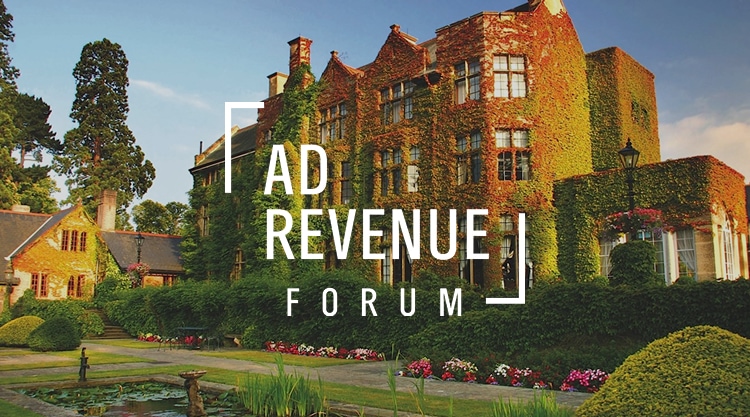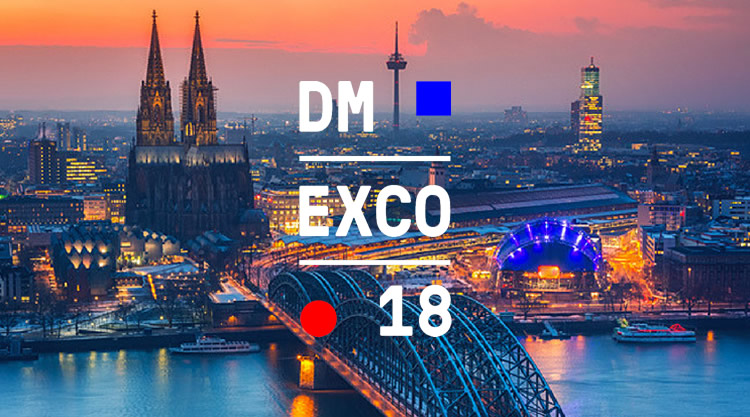The rapid evolution of the programmatic landscape has led not only to growing opportunities for premium content publishers and the buyers of their inventory, but also to rising complexity and confusion about how best to navigate the new automated world.
At PubMatic we have a longstanding commitment to transparency. We value openness about trading in the digital ad space and about how our own business works. Transparency means having honest, frank, and open discussions about the opportunities and challenges we face and for that reason, we held our first ever Ad Revenue Forum EMEA at Pennyhill in the UK, on the fourth and fifth of October. We invited some of the best-placed individuals in our industry to explore the major, strategic issues facing our sector and examine how the return of control to advertisers and publishers can help us act more transparently and more effectively to help us clear the path ahead for future customer satisfaction and growth.
How brands are adapting for the programmatic age
The day began with a presentation from Gawain Owen, Digital Strategy Director at Jellyfish on how brands are adapting for the programmatic age. Gawain’s five years at Nestle and Diageo as the first-generation brand-side marketer who adopted programmatic, made him the perfect authority to speak on the subject. Gawain challenged both brands and publishers in the room to define what programmatic is to their business, who in their company is responsible for it, how it integrates into other forms of media buying and what results they expect it to deliver. Once these definitions are set, share this information with your partners so you are all on the same page and can share the same goals. It is only through this open communication that you can build a true honest partnership.
Next, it is about establishing an operating model and agreeing to the roles and responsibilities of your partners. Brands and publishers should not shy away from the technology because they need an understanding of the technology and why it is being used. There are still many companies that are unwilling to ask their technology provider for a login to the platform. If transparency is being offered to you, take it.
Data comes in spreadsheets but human insight comes in Word documents
Then, we heard from Jess Burley, Global CEO, m/SIX on the six things that agencies want from publishers. Top of the list is that agencies want data. Jess revealed 95 percent of m/SIX’s buys are informed by extended data (1st party being the most valuable) because it helps them to get a unique view of their customers. However, it is important to note the difference between data and insight. Jess defined this beautifully by stating that data comes in spreadsheets but human insight comes in Word documents, where you can explain the relationships between the data points.
Next, Jess heavily stated that when it comes to third-party measurement, it is not longer an option, it’s mandatory. The YouTube and Facebook crises have proved that you shouldn’t just rely on publisher reporting alone, but independent measurements of both verification and performance also. Yet, when it comes to trust, it’s more than just measurement, it’s about control. Self-service platforms help agencies prove publishers’ value. On average, across m/SIX clients, the agency has seen a 22 percent improvement in CPA migrating from managed solutions to self-serve.
The supply-chain from hell? Restoring trust and transparency in the ad tech ecosystem panel
Our first panel of the day was titled “The supply-chain from hell? Restoring trust and transparency in the ad tech ecosystem” and was hosted by Jeff Hirsh, CMO and Head of US Publisher Development at PubMatic with panelists including Sacha Berlik, MD, EMEA at The Trade Desk; Daniel Fisher, MD, Europe at Playbuzz and Jamie Wilson, EVP at Perform. Daniel began the discussion by explaining that standardization comes from the ground up. It does not happen overnight because there are still a lot of people that are afraid to ask questions for fear of probing and finding out where the margins are made. Sacha, however, countered that it’s actually more of a top-down approach and when Mark Pritchard of P&G, the biggest advertiser in the world, got on the biggest stage in our industry and condemned the “murky and fraudulent supply-chain”, people began to listen.
Jamie suggested that attribution and direct-response campaigns could alleviate the transparency problem, to which Jeff responded that performance-based buying and the “it’s working, why do we care?” mentality is how we got into this mess in the first place. The conversation concluded by shifting focus onto the duopoly and new players in the market, namely consultancies. Sacha highlighted the number of independent players emerging in the market that are strong enough to be a real alternative to Facebook and Google, yet the main threat comes from the consultancies buying up the media agencies. Although they are relatively new to the industry, the acquisitions and hires that consultancies such as Accenture are making will inevitably build up their expertise in the market.
A walkthrough auction dynamics
Amar Goel, Founder and Chairman at PubMatic took the audience through our recent whitepaper on “Auction Dynamics: Understanding how ad space is traded and why it matters”. Auction dynamics refers to the forces that affect the price paid when impressions are sold. The underpinnings of these dynamics are control and attribution: Who sets the direction? What kinds of tools are made available? Which impression resulted in action? And how are successful participants navigating towards better outcomes? Amar explained how floors and fees affect SSP and DSP behaviors and reviewed different bidding strategies and how they work.
Key things to know about GDPR
With the GDPR quickly approaching, Nick Stringer, Public Policy Consultant, explained the key things the industry needs to know and how to prepare for the new regulation. Essentially, the new regulation is aimed at giving consumers control of their data. But the definition of personal data is unclear. It can be assumed the regulation will pull more digital advertising data into the “regulatory net”. So what does that mean for us? Well, with hefty fines and the global impact of the new law, non-compliance is not an option.
Producing great journalism in the era of “fake news”
Bill Swanson, VP, EMEA at PubMatic, hosted the second panel of the day which aimed to identify how news media companies can continue to produce great journalism in the era of ‘fake news’. Joining Bill were Dom Perkins, Head of Programmatic, Data and Video at Time Inc., Scott Deutrom, Chief Digital Revenue Officer at ESI and Jeroen Zanen, CEO and Founder at Crowdynews.
Scott began the conversation by arguing that the rise of fake news has deterred brands from advertising on hard news because they mistake it for non-brand safe. This has led to more and more news companies jeopardizing their integrity for fear of being too controversial and scaring away advertising revenue. When asked how they are dealing with transparency, or the apparent lack of it, Dom revealed that Time Inc. is working with fewer, more trusted partners so that they can have more control over their digital assets. It also keeps the biggest players more honest.
Programmatic in 2018: Forget the future, let’s clear up the here and now
Oliver Gertz, MD, EMEA at Mediacom was originally asked to present on where he sees programmatic going in 2018. Oliver, however, decided it was more important to focus on cleaning up the ‘here and now’ than talking about self-driving cars. With hidden fees, rebates and ad fraud plaguing our industry, we agreed these were issues that needed more attention. Oliver identified two types of transparency: measurement (fraud and reporting) and disclosure (supply-chain and fees). Oliver also stated that reports and statistics claiming that only a shocking percentage of spend reaches a publisher is pure scaremongering and you need to examine the source before quoting such numbers.
Video, mobile and native
The final panel of the day, hosted by Emma Newman, Country Manager, UK at PubMatic, focused on “Video, mobile and native.” Panelists included Amit Dar, Strategic Partnerships Manager, Europe at Taptica; Stephen Jenkins, Founder and MD at Too Many Dreams and Magnus Hultman, CEO and Founder at Strossle. Stephen began the conversation by taking the example of TV and showing an ad slot has 30 seconds to make an impact. That is all it has.
Mobile should follow TV’s example by making high-quality and high-impact advertising, without getting distracted by shiny buttons and formats. Amit agreed that we have a responsibility to challenge our clients to be more creative. We have the tools and technology at our disposal to make something great, rather than just resizing a TV ad. Magnus added that in order for clients to invest more in mobile, video and native, we need to engage the clients in what the numbers mean and the added value of these formats.
The digital media industry continues to exist in a constant state of flux. As new trends emerge and gain traction, we are faced with new demands from our clients – whether advertiser, media owner, or consumer – almost daily. In particular, issues such as the “ad-tech tax”, “fake news”, and GDPR point to an overarching theme: the demand for total transparency in how digital media is traded. Our primary goal for PubMatic’s Ad Revenue Forum was to bring together senior decision makers from across the European publishing and media buying industry to discuss some of the key issues affecting the digital landscape in an open forum. Honest, open dialogue between all players in this complex but fascinating landscape is the best route to continued success and we are on our way to a clearer path ahead.




